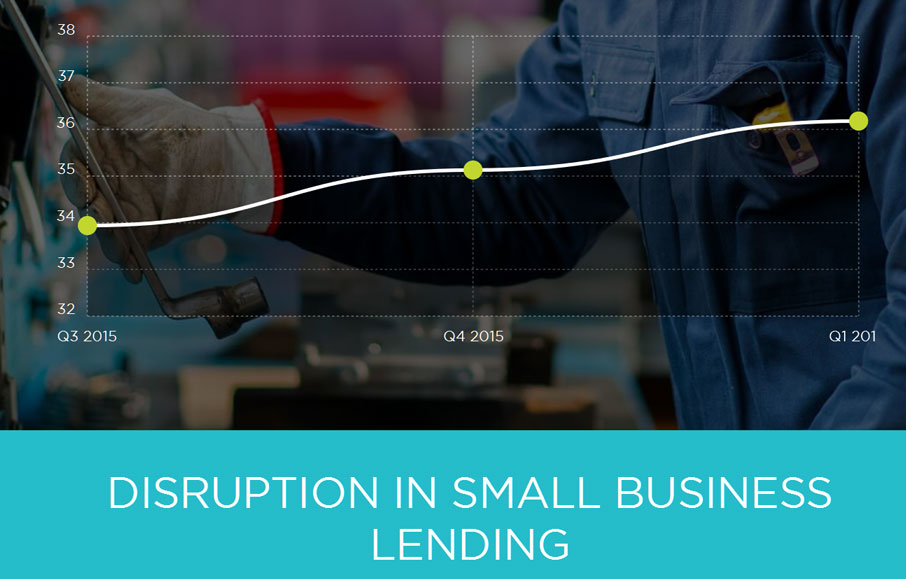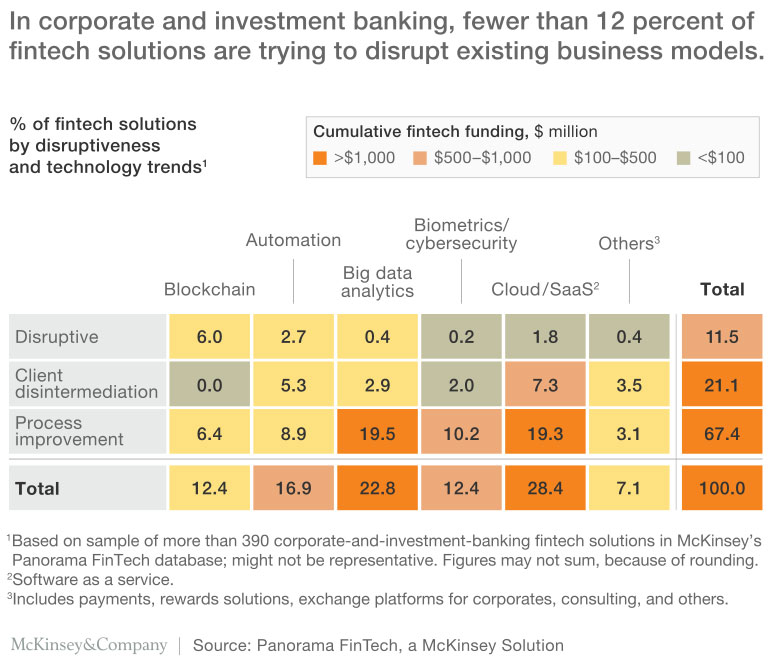Kabbage is one of the most interesting platform lenders offering loans to SME’s in the US, and now Canada, Mexico and via white label platforms other countries, including Australia. Their analytic platform takes business activity data such as online sales and accounting information to facilitate fast underwriting in just a few minutes. Loans of up to $100,000 are available to businesses with a turnover of $50,000 or more.
The Kabbage platform has originated more than US$1.6 bn in loans, via Kabbage, the SME platform, Karrot, their consumer lending business and via white labeling to third party lenders. Kabbage is funded and backed by leading investors including Reverence Capital Partners, SoftBank Capital, Thomvest Ventures, Mohr Davidow Ventures, BlueRun Ventures, the UPS Strategic Enterprise Fund, ING, Santander InnoVentures, Scotiabank,and TCW/Craton.
In 2015 Kabbage announced plans to move into the Australian market with a white-label offering of its small business lending technology. The launch in Australia represents Kabbage’s first foray into the Asia-Pacific region, having already been in operation in both the U.K. and the U.S.
The service in Australia is operated by Kikka Capital, which licensed the platform and manages marketing, funding, and loan servicing. Kabbage handles underwriting and management of the loans.
Here is an interesting post where Kabbage discuss small business funding options. We have previously discussed the difficulty SME’s face in getting access to funding, and the role of fintechs have in changing the lending landscape. The latest Disruption Index measures the growth in momentum for SME lending in Australia.
Many small business owners might at some point find it difficult to get working capital or a small business loan from a traditional bank – and in that situation, it’s important to know about the various alternative loan options that are available.
According to a recent article in the Harvard Business School “Working Knowledge” blog, as of May 2014, only 13 percent of applicants for small business loans at big banks were getting approved. The SCORE organization has found that small business owners are less likely to get a bank loan if their business is young (less than 2 years in business), if they have less than perfect credit (credit score below 640) and if they are seeking a relatively small loan amount (less than $250,000). Big banks tend to prefer to issue larger loans than most small business owners need, because the banks’ costs of issuing loans are not much smaller for small loans than they are for big loans.
According to a survey published in an article in the Wall Street Journal, 19 percent of small business owners have postponed investments in their businesses because of lack of loan funding, and only 18 percent could get a bank loan – faced with a lack of funding from traditional sources, 17 percent of business owners borrowed money via credit cards, and 13 percent asked their friends and family for loans. Small business owners are starting to get more creative in looking for alternative loan options when they cannot get what they need from the traditional bank lenders.
One of the biggest new trends in helping business owners find alternative loan options is the rise of platform lending. With platform lending, borrowers can get the money they need without relying on the traditional bank system. A study from Harvard Business School found that in 2014, although the total loan volume of small business bank loans decreased by 3.1 percent, overall online lending to small businesses grew by 175 percent. This is a sure sign that platform lending is on the rise and is taking the place of traditional lenders.
With so many business owners seeking loans and finding it more difficult to get approved by traditional bank lenders, it’s no wonder that new options like platform lending are starting to fill the gap. Platform lending is an innovative new way to get loans, where people can sign up online, go through a faster, efficient approval process and get the funds they need more quickly than a typical bank loan.
If you’re looking for a small business loan and wondering how to navigate the alternative loan options such as platform lending, here are a few guidelines on how to evaluate each of your options:
Loan from Family and Friends
Borrowing from family and friends is often a first-resort loan for many small business owners. After all, the people who know and love you best are often eager to support you in your business endeavors. If you want to let your family and loved ones in on a great investment opportunity, selling equity in your business or asking for a small business loan could be one way to get the cash you need.
Advantages: Friends and family typically know you best, and they will believe in you and support your vision of success, even if a traditional bank lender cannot offer you a loan. It’s natural to want to turn to your inner circle first. And your family might be willing to give you more favorable payment terms – lower interest rate, longer time to pay off the loan, etc. – than a typical bank would.
Drawbacks: First of all, it can be hard to raise enough money just by asking your family and friends. Unless your family are a bunch of angel investors, they might not have enough money to spare to be able to fund a significant business investment. And even if you can get enough money from them, borrowing from friends and family can be risky – not only in a financial sense, but also emotionally risky. After all, what if your business idea doesn’t work out? What if you lose your family’s money? What if your business becomes a source of hurt feelings and damaged relationships with the people you love most? It’s often better to keep business and family concerns separate from each other.
Crowdfunding
Other small business owners look for alternative loan options by using crowdfunding. By setting up an online crowdfunding campaign, your business can ask your social media followers, friends and fans to contribute money to help fund your business’ next phase of growth.
Advantages: Online crowdfunding platforms like Kickstarter, GoFundMe and others give you the power to raise money to support your business, whether it’s funding for new product development or for any other specific purpose. By giving away prizes and using other participation strategies, you can motivate people to give more money – for example, by giving donors a special behind-the-scenes experience or an early-stage sample of your new product.
Drawbacks: Crowdfunding is flexible and adaptable, but that same flexibility can also make the results unpredictable: according this Kabbage article, the typical crowdfunding campaign takes about 9 weeks and raises an average of $7,000. Depending on how much time you have and how much money you need, crowdfunding might not be the best fit for your goals.
Platform Lending
With banks making it more difficult for small business owners to get loans, a variety of online services known as “platform lending” services have come onto the market. Kabbage is one of these online platform lenders where business owners can get loans more quickly and often more effectively than they could from a traditional lender.
Advantages: Platform lending is often a good option for people who have less-than-perfect credit. Also the loan amounts offered by platform lending services are often a better fit with what small business owners are seeking – for example, $40,000 to $100,000. Another advantage of platform lending is that the approval process is more flexible and relevant to small businesses than the traditional bank loan process; for example, platform lenders tend to look at a business’ online sales and social media following and other metrics to show the creditworthiness of the business that are separate from the traditional approach of looking at credit scores.
Drawbacks: Platform lending tends to charge a slightly higher interest rate than a typical bank small business loan. Make sure to do your research and understand the fine print of any platform lending agreement before you sign – just like you would if you were signing up for a new credit card or other financial product.
If your business is struggling to get approved for a bank loan, don’t get discouraged – get money! There are more alternative loan options than ever before, especially if you are able to be creative and flexible and pursue some new services like platform lending.





